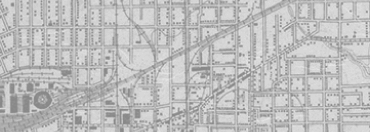


Back
T17 Transcript of the State vs. Ruby: Statement of Facts: Jury Trial, Volume 2
Transcript of the State vs. Jack Ruby: Statement of Facts: Jury Trial, Volume 2.Melvin Belli, Joe Tonahill and Phil Burleson represented the defendant, Jack Ruby; Henry Wade, Dallas County District Attorney, was the prosecutor, assisted by Jim Bowie, Bill Alexander and Frank Watts. The presiding judge was Judge Joe B. Brown.The witnesses who appeared on this day of the trial are L. C. Graves, D. R. Archer and T. D. McMillon. State's Exhibit No. 11 (five bullets in an envelope) and State's Exhibit No. 12 (spent shell) were admitted into evidence.Transcript retains original covers and pages are numbered 215 - 429; typed on thin onionskin paper. Each page is individually stamped "Copyright (c) 1964, Shirley M. Stinebaugh - James Muleady, Dallas, Texas". Typed text on the cover:"No. E. 4010-JIn the Criminal District Court No. 3, of Dallas County, Texas. January Term, A. D. 1964.Statement of FactsThe State of Texasvs.Jack RubensteinAlias Jack RubyVolume Two - Jury Trial heldMarch 4 - 14, 1964.Pages 215 - 429.(Copy)"At the bottom is a short printed statement: "James J. MuleadyOfficial Court Reporter2nd Floor Records Bldg. AnnexPhone Riverside 1-5624Dallas, Texas"
T17 Transcript of the State vs. Ruby: Statement of Facts: Jury Trial, Volume 2
03/05/1964
Jack Ruby trial
Transcripts
Trials
Court records
Evidence
Witnesses
Exhibits
Bullets
Cartridges
Cartridge cases
Ruby, Jack
Graves, L. C.
Archer, D. R.
McMillon, T. D.
Muleady, James J.
Stinebaugh, Shirley M.
Belli, Melvin
Tonahill, Joe H.
Burleson, Phil
Wade, Henry M.
Bowie, Jim
Alexander, William F.
Watts, Frank
Brown, Judge Joe B.
State of Texas
Criminal District Court No. 3
Dallas County Criminal Courts Building
Dallas County District Attorney's Office
Dallas
Paper
11 3/16 × 8 3/4 × 15/16 in. (28.4 × 22.2 × 2.4 cm)
Dallas County District Clerk Collection/The Sixth Floor Museum at Dealey Plaza
1994.002.0006.0002
The Museum recorded oral histories with the following individuals named in this document: Dallas Police Department officers Don Archer and L.C. Graves, defense attorneys Joe Tonahill and Phil Burleson and Dallas County D.A. Henry Wade. - Stephen Fagin, Curator
The late Dallas police detective Don Archer witnessed the shooting of Lee Harvey Oswald and was immediately ordered to remain with Jack Ruby. In his 2002 oral history with the Museum, Archer recalled that on the elevator ride from the basement to the Dallas police jail upstairs, Ruby twice said, "Well, I just couldn't let him get away with it," referring to Oswald. Archer remained with Ruby on the fifth floor for several hours, and he recalled that Ruby was "very, very nervous." Archer said, "[Ruby] was just perspiring real bad. I could see his heart beating real fast." According to Archer, once he informed Ruby that Lee Harvey Oswald had died at Parkland Memorial Hospital, Ruby's demeanor completely changed. Archer said, "He quit perspiring. His chest quit thumping. He just calmed down." This led Archer to believe that Ruby was likely part of a plot. He recalled in his oral history, "I felt like he was connected, and he had accomplished what he needed to accomplish." This significant recollection was featured in the British television documentary series, The Men Who Killed Kennedy. In that documentary, Archer stated, "I would say that his life had depended on him getting Oswald." - Stephen Fagin, Curator
In the Museum's 1994 oral history with L.C. Graves, recorded less than a year before his death, the former police detective was quite candid with his criticism of how the prisoner transfer of Lee Harvey Oswald was handled with regard to media access to the suspect. Graves, wearing a dark suit, walked along Oswald's left side, while detective Jim Leavelle was handcuffed to Oswald on the right. When asked if he said anything to Oswald on their way to the police basement, Graves said, "No, no, I didn't because my mind was on getting rid of that sucker. And I didn't like the circumstances under which we had to get rid of him, but I didn't have any choice. It was like a lamb being led to slaughter, and I felt like we knew better, but we didn't have the choice, you know." According to Graves, he immediately recognized Jack Ruby when the nightclub owner stepped out and shot Oswald on live television. - Stephen Fagin, Curator
T17 Transcript of the State vs. Ruby: Statement of Facts: Jury Trial, Volume 2
Transcript of the State vs. Jack Ruby: Statement of Facts: Jury Trial, Volume 2.Melvin Belli, Joe Tonahill and Phil Burleson represented the defendant, Jack Ruby; Henry Wade, Dallas County District Attorney, was the prosecutor, assisted by Jim Bowie, Bill Alexander and Frank Watts. The presiding judge was Judge Joe B. Brown.The witnesses who appeared on this day of the trial are L. C. Graves, D. R. Archer and T. D. McMillon. State's Exhibit No. 11 (five bullets in an envelope) and State's Exhibit No. 12 (spent shell) were admitted into evidence.Transcript retains original covers and pages are numbered 215 - 429; typed on thin onionskin paper. Each page is individually stamped "Copyright (c) 1964, Shirley M. Stinebaugh - James Muleady, Dallas, Texas". Typed text on the cover:"No. E. 4010-JIn the Criminal District Court No. 3, of Dallas County, Texas. January Term, A. D. 1964.Statement of FactsThe State of Texasvs.Jack RubensteinAlias Jack RubyVolume Two - Jury Trial heldMarch 4 - 14, 1964.Pages 215 - 429.(Copy)"At the bottom is a short printed statement: "James J. MuleadyOfficial Court Reporter2nd Floor Records Bldg. AnnexPhone Riverside 1-5624Dallas, Texas"
T17 Transcript of the State vs. Ruby: Statement of Facts: Jury Trial, Volume 2
03/05/1964
Jack Ruby trial
Transcripts
Trials
Court records
Evidence
Witnesses
Exhibits
Bullets
Cartridges
Cartridge cases
Ruby, Jack
Graves, L. C.
Archer, D. R.
McMillon, T. D.
Muleady, James J.
Stinebaugh, Shirley M.
Belli, Melvin
Tonahill, Joe H.
Burleson, Phil
Wade, Henry M.
Bowie, Jim
Alexander, William F.
Watts, Frank
Brown, Judge Joe B.
State of Texas
Criminal District Court No. 3
Dallas County Criminal Courts Building
Dallas County District Attorney's Office
Dallas
Paper
11 3/16 × 8 3/4 × 15/16 in. (28.4 × 22.2 × 2.4 cm)
Dallas County District Clerk Collection/The Sixth Floor Museum at Dealey Plaza
1994.002.0006.0002
The Museum recorded oral histories with the following individuals named in this document: Dallas Police Department officers Don Archer and L.C. Graves, defense attorneys Joe Tonahill and Phil Burleson and Dallas County D.A. Henry Wade. - Stephen Fagin, Curator
The late Dallas police detective Don Archer witnessed the shooting of Lee Harvey Oswald and was immediately ordered to remain with Jack Ruby. In his 2002 oral history with the Museum, Archer recalled that on the elevator ride from the basement to the Dallas police jail upstairs, Ruby twice said, "Well, I just couldn't let him get away with it," referring to Oswald. Archer remained with Ruby on the fifth floor for several hours, and he recalled that Ruby was "very, very nervous." Archer said, "[Ruby] was just perspiring real bad. I could see his heart beating real fast." According to Archer, once he informed Ruby that Lee Harvey Oswald had died at Parkland Memorial Hospital, Ruby's demeanor completely changed. Archer said, "He quit perspiring. His chest quit thumping. He just calmed down." This led Archer to believe that Ruby was likely part of a plot. He recalled in his oral history, "I felt like he was connected, and he had accomplished what he needed to accomplish." This significant recollection was featured in the British television documentary series, The Men Who Killed Kennedy. In that documentary, Archer stated, "I would say that his life had depended on him getting Oswald." - Stephen Fagin, Curator
In the Museum's 1994 oral history with L.C. Graves, recorded less than a year before his death, the former police detective was quite candid with his criticism of how the prisoner transfer of Lee Harvey Oswald was handled with regard to media access to the suspect. Graves, wearing a dark suit, walked along Oswald's left side, while detective Jim Leavelle was handcuffed to Oswald on the right. When asked if he said anything to Oswald on their way to the police basement, Graves said, "No, no, I didn't because my mind was on getting rid of that sucker. And I didn't like the circumstances under which we had to get rid of him, but I didn't have any choice. It was like a lamb being led to slaughter, and I felt like we knew better, but we didn't have the choice, you know." According to Graves, he immediately recognized Jack Ruby when the nightclub owner stepped out and shot Oswald on live television. - Stephen Fagin, Curator









